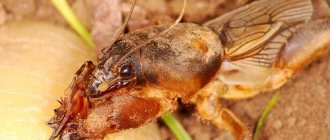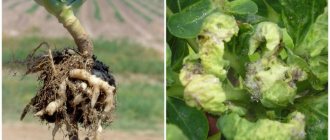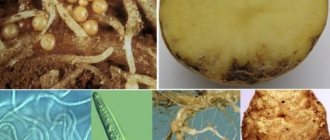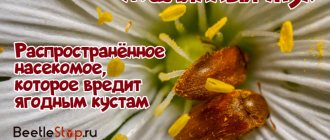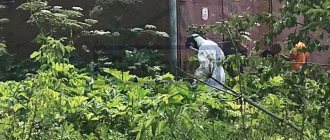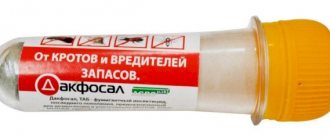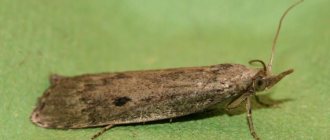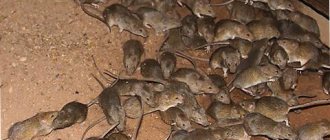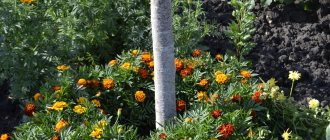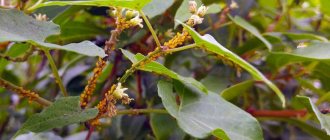Aphids are a representative insect known to garden and dacha owners as a dangerous pest of cultivated plants. For many years, people have been trying to fight these individuals. They have small body sizes and a color that allows them to camouflage themselves on the green parts of plants. This makes it much more difficult to protect the garden from the pest. The superfamily includes more than 5,000 species, of which about 1,000 live in European territory. They affect a wide range of cultivated plants: vegetables, fruits and berries, herbs.
Origin of the species and description
Photo: Aphids
Aphids are a superfamily belonging to the class of insects. It has not been reliably revealed when and from whom insects originated - there is not a sufficient array of fossils from those times to reveal this. There are only the most reliable and widespread hypotheses, but they can be refuted over time. Thus, it was previously believed that they originated from millipedes, but now the much more common point of view is that they are closest to crustaceans and arose either from a common ancestor or directly from crustaceans.
The most ancient crustaceans were found in Early Cambrian sediments more than 510 million years old, insects - only in layers formed a hundred million years later. This makes it more likely that insects originated from crustaceans than from a common ancestor, although it cannot be ruled out that their earliest remains were simply not found or were not preserved at all.
Video: Aphids
Phylogenetic reconstructions are also consistent with this version. It is considered most likely that insects evolved in the late Silurian period. But when exactly the aphid occurred is unknown. The fact is that its fossil remains are very rarely preserved; perhaps the only option is if they ended up in amber. But this method has limitations, since the oldest amber is 120 million years old. Ultimately, such finds are too few to draw conclusions, but at least they make it possible to establish a time when aphids definitely inhabited our planet - the beginning of the Paleogene period.
It is also possible that they became one of the species that appeared after the Cretaceous-Paleogene extinction, and that they arose significantly earlier. Analysis of the available data and the morphology of the aphids themselves does not allow us to lean towards one of these options: insects constantly continue to generate new forms, both developed and seemingly primitive.
For example, dragonflies and cockroaches appeared in the Carboniferous period, hymenoptera - in the Triassic, butterflies in the Cretaceous, higher dipterans only in the Neogene, and lice in the Pleistocene, that is, quite recently by the standards of paleoanthology. Aphids are able to quickly change and adapt when new plants appear - this is facilitated by their reproductive system with the accompanying rapid variability of generations. As a result, they have formed an extensive superfamily, including ten families and thousands of species.
Its scientific description was compiled by P. Latrey in 1802, the name in Latin is Aphidoidea. But it should be noted that there are other classification options: sometimes, in addition to the one indicated, another superfamily Phylloxeroidea is distinguished, and sometimes two - the last one is Adelgoidea. There is also an option in which Aphidoidea becomes a megafamily, including a number of superfamilies. The researchers did not come to a common point of view.
Appearance and features
Photo: What aphids look like
The shape of the aphid's body is close to round; in most species, the length is no more than 3 mm, although there are also especially large ones, reaching sizes up to 8 mm. The shape of the head is trapezoidal; compound eyes and antennae stand out in front, serving as an organ of touch. Vision is very good, but aphids distinguish colors poorly, usually only a few shades. It itself can have a different color - most often it is green, so as not to stand out on the plant on which it feeds, but it can also be different: brown or dark gray, matching the color of the branches, white, red. Aphids have a thin proboscis, with the help of which they draw juices from plants: it is sharp and can pierce a leaf or stem so that they can get to the juice.
The body of the aphid is covered only by a soft and almost transparent shell - unlike insects protected by a chitinous cover, it is practically defenseless when attacked by a predator. Breathing holes are located on the anterior segments. Although the aphids have long legs, they usually move with difficulty and rather slowly. Representatives of some species crawl on plants, others can jump, pushing off with their front legs, but it is easiest for those that have wings. Such individuals can fly quite long distances, so their offspring quickly disperse throughout the area. Interestingly, only females can have wings. Aphids without wings densely populate a small area, and it is with them that gardeners and gardeners have to fight.
Interesting fact: The Stomaphis aphid holds the record for the longest proboscis. It exceeds the size of the insect itself: an adult aphid of this species reaches 5-6 mm, and the proboscis can exceed 10 mm.
Beet or bean
The egg is black, elliptical . The founder and the wingless virgin have an oval body, widened at the sides.
It is colored brown, black or green, covered with a wax-like coating. Winged individuals have a black head, antennae and chest, and a lighter belly.
- Geographical distribution. Europe, North America, Central Asia and Transcaucasia.
- On what plants is it found? Prefers beets, jasmine, euonymus, beans, poppy, viburnum, spring vetch, sunflower and potatoes.
- Features of development. Alternation of generations throughout the growing season of food plants, the last generation mates and lays wintering eggs.
- What harm does it cause? The leaves wrinkle and curl, the plant is stunted in growth and may die. Carries various viral diseases.
Where do aphids live?
Photo: Aphids in Russia
She is able to live almost anywhere there are plants. The most preferable climatic conditions for it reign in the temperate zone - the insect does not like severe cold, but it also has difficulty withstanding heat. However, some species have adapted well to life in the tropics. In the subtropical climate zone, the greatest diversity of species is observed. Aphids prefer areas with average humidity, equally disliking both overly wet and dry areas - but they are also found in them, just less often.
These insects are able to live in a wide variety of environments - in steppes, meadows, fields, forests, parks, and finally, in gardens. If the summer is cold and rainy, there are very few aphids, but as soon as favorable conditions arise, they multiply rapidly. Its eggs die at temperatures below 25-30 degrees, but even in the north with its cold winters, aphids manage to survive under snow litter, in anthills or other shelters, where it is much warmer than outside.
Very often it can be seen near anthills - it develops a symbiotic relationship with their inhabitants. The ecological niche of aphids is very wide; you can encounter them both above the ground - they climb onto plants and suck sap from them, and in the air and in the soil - some species suck sap from the roots.
Rose green
All forms and stages of development are not very different from each other. Any individual has an ellipsoidal green body , long brown antennae, and a sword-shaped elongated tail.
- Geographical distribution. Lives almost everywhere.
- On what plants is it found? In addition to roses and rose hips, aphids can settle on strawberries, pears and apple trees.
- Features of development. It goes through a full cycle. Overwinters on branches in the egg stage. Foundresses produce an average of about 80 eggs each. It reproduces in greenhouses and conservatories all year round.
- What harm does it cause? The growth of bushes is inhibited, the leaves curl, the buds do not open, weakened plants do not tolerate winter cold and virus attacks.
What do aphids eat?
Photo: Aphid insect
She feeds on the juices of plants, and a wide variety of them. Some species have special preferences, but most aphids can drink juices from a wide variety of plants, and this applies to herbs, shrubs, and trees. Almost any non-garden or vegetable plant can be attacked by an aphid, therefore it is more useful not to list them all, but, on the contrary, to list the species that it does not like - even their proximity can scare it away. Among the most accessible plants to gardeners, it includes garlic, onion and Dalmatian chamomile. There is another way to combat aphids - to select a place on the site specifically for them and plant there those plants that attract them more than others.
Among them:
- poppy;
- cosmos;
- nasturtium;
- tuberous begonia;
- Linden;
- viburnum.
As a result, these plants are left to be torn apart by aphids, and it is assumed that the pests will not be distracted by others. But for this they need to be planted at a distance, so they require a lot of space. In addition, the aphid population should be controlled and not allowed to multiply excessively - it may be necessary to use toxic chemicals. Therefore, sometimes a similar, but slightly different method is used - plants that attract aphids are planted in a ring around those that they are supposed to protect, and when the aphids breed on them, these plants are mowed down and their entire colony is destroyed.
Fighting aphids on indoor plants
Aphids on indoor flowers
Indoor flowers are also not protected from pests and can quickly become infected, for example, from a newly acquired flower infected with a harmful insect. The pest very quickly moves onto healthy plants in pots and continues to parasitize and actively reproduce.
To deal with it, prompt action will be required. Ammonia and a solution based on laundry soap can be an excellent remedy. The main thing is to treat the plants regularly until you manage to get rid of the pest. It will be quite difficult to do this, but with due persistence, a lover of home flowers will definitely defeat aphids. You can purchase special chemicals for indoor plants that will help eliminate the pest in a short time.
Features of character and lifestyle
Photo: Yellow aphid
Aphids spend most of their life feeding. From morning to evening, she can suck out the juices from the plant, from time to time crawling to the next leaf, because they have dried up in the previous one. She is very voracious, mainly due to the fact that she constantly reproduces, and this requires a lot of nutrients. Sometimes aphids enter into a symbiotic relationship with ants, taking advantage of their love for sweets. Aphids produce sweet secretions, and the ants take care of them for this: they transfer them to other plants when required, protect them, care for their eggs and build shelters that protect them from bad weather.
When aphids are attacked by predators, the ants defend them to the last and often even die, hoping to wait for their relatives to approach. To make this happen less often, aphids can even be placed in an anthill, where it is much easier to ensure their safety, but you have to feed them. The process of obtaining sweet secretions is called milking, because outwardly it is very similar to milking a cow - the ants massage the abdomen of the aphid, and it secretes a portion of viscous secretions, after which the ants immediately eat them.
You can get a very large amount of moisture per day from one aphid, sometimes comparable to its weight. The shortest-lived species of aphids die a couple of days after birth, others can live for several weeks. In cool climates, the lifespan increases to two months.
Interesting fact: Treating plants with poisons or bacterial solutions against aphids should be done in clear sun. If the weather is cloudy, then the leaves curl, and some pests can survive inside them, and even a small number will be enough for them to quickly again fill the entire area. Therefore, it is necessary to treat all areas where aphids have settled, and it is better to agree in advance with neighbors if they also have aphids.
Harm
The damage caused to plants by aphids is underestimated by many, but in vain. Aphids suck plant sap from stems and leaves, buds and buds. The leaves of the affected plant curl, the buds and shoots are deformed, growth slows down, and the fruits do not ripen. The affected, weakened plant may not survive the winter. In addition to direct damage, aphids transmit viral diseases; black sooty fungus (black sooty mildew) settles on the sugary secretions of aphids.
Aphids pierce the integument of the plant and suck out the juice. In areas of massive bites, tissues become deformed and then die. Flowers on the affected peduncles do not develop and wither as soon as they open. The peduncle itself quickly fades. Aphids, like other homoptera insects (mealybugs, rootbugs, whiteflies, leafhoppers, scale insects, false scale insects), suck much more juice from the plant than they need to maintain vitality. Excess moisture and carbohydrates are excreted from the body of aphids in the form of sugary secretions called honeydew or honeydew. This sticky, sweet liquid coats the plant, making it difficult for it to breathe. Honeydew is a good substrate for the development of various fungi. Sooty fungi, for example, can cover a leaf with a continuous layer, reducing the intensity of photosynthesis, which depresses already weakened plants.
Social structure and reproduction
Photo: Aphids on leaves
Aphids live in large colonies, and they can arise from one individual and multiply incredibly. It happens like this: a fertilized female lays eggs, most often choosing inconspicuous and well-covered places for this. The masonry may end up near the roots of plants or in the bark of trees, in anthills. The eggs spend the winter there, and when the weather warms up, new individuals emerge from them. These are wingless females capable of reproduction through parthenogenesis, that is, without the participation of males. Once in a favorable environment, they do this very quickly. In the next generations of some species of aphids, females are already born with embryos inside, and soon they themselves produce offspring.
This further speeds up the process and the aphids begin to multiply exponentially. A female can give birth to several dozen larvae every week, and they grow very quickly and begin to reproduce 2-3 days after birth for short-lived species, or 1-2 weeks for long-lived species. All this time, only wingless females appear. But if a colony of aphids grows excessively and begins to lack food in the area, winged females begin to be born. They fly away from the colony and found new ones, still reproducing by parthenogenesis. Such a female is capable of flying 20-30 kilometers.
Some species are dioecious: until winged females appear, they live on some plants, after which they stop reproducing on them and move to others. Finally, in the fall they return to their original place. During the spring and summer, 10-20 generations of aphids manage to change, and if you don’t fight them, then each time there are an order of magnitude more of them. Finally, when the weather worsens with the onset of autumn, males and females emerge and are capable of reproducing sexually. In this case, fertilization occurs, and larvae will not be born, as before, but a clutch will be made that can survive the cold. There are much fewer of them - all that is required is to produce female founders in this way, who will begin to reproduce by parthenogenesis in the spring, and the whole process will begin anew.
Grape phylloxera
The body is oval, yellow or brown in color. The antennae and proboscis are very short.
- Geographical distribution. Viticulture areas in Europe, North America, Africa and Asia.
- On what plants is it found? Lives only on all types of grapes. The leaf form does not settle on pubescent varieties.
- Development. Root and leaf forms go through a full cycle. One leafy female can produce up to 500 eggs. Up to 9 generations change per season.
- What harm does it cause? Phylloxera is a quarantine pest. Galls appear on the roots and deformation appears on the leaves. The population is capable of completely destroying the vineyard.
Natural enemies of aphids
Photo: What aphids look like
Insects and birds feed on aphids. Of insects these are:
- ladybugs;
- some riders;
- praying mantises;
- earwigs;
- ground beetles;
- lacewings;
- hover flies;
- wasps.
Of all the above, the most harmless for the garden, and at the same time the most effective in combating aphids, are lacewings and ladybugs. For both, it can become the main source of food, and the eggs of these insects can be bought in specialized stores. Once the population has been bred from them, aphids can be forgotten. Plants that attract these insects also help: umbrellas, legumes and spicy plants. For example, common dill, clover or mint will bring them into the garden. And when buying eggs for breeding, you should also not forget about these plants, otherwise the brood may simply fly away, but the aphids will remain. Ground beetles can be attracted to nightshades, hover flies flock to daisies, and for earwigs, you can put flower pots in the garden and put shavings in them. Small birds also fight aphids, but are not as effective, and they can also cause damage to gardens themselves.
Interesting fact: Parasitic wasps prefer to lay their eggs in green-colored insects, while ladybugs are more likely to hunt red ones. The aphids adapt to them - if there are more parasitic wasps nearby, then a red one is born, and if there are ladybugs, a green one is born.
Now you know how to get rid of aphids on your property. Let's see how the insect reproduces.
Reasons for appearing in the garden
Aphids on apple tree branches
With the beginning of spring and nature’s return to life after winter, some gardeners note with horror the numerous aphid infestations of plants in the garden. There may be many reasons for this, the main ones being:
- planting a sprout in the garden that is already infected with aphids;
- transfer of harmful insects from a neighboring area using the wind;
- transfer of aphid larvae by black ants, animal hair, or the gardener himself;
- contaminated soil brought from other sites;
- lack of timely prevention or reliable treatment against this type of pest.
It is easier to prevent any pathology than to treat the consequences of harmful effects. That is why there are a number of preventive measures that will help protect garden plants from harmful beetles.
